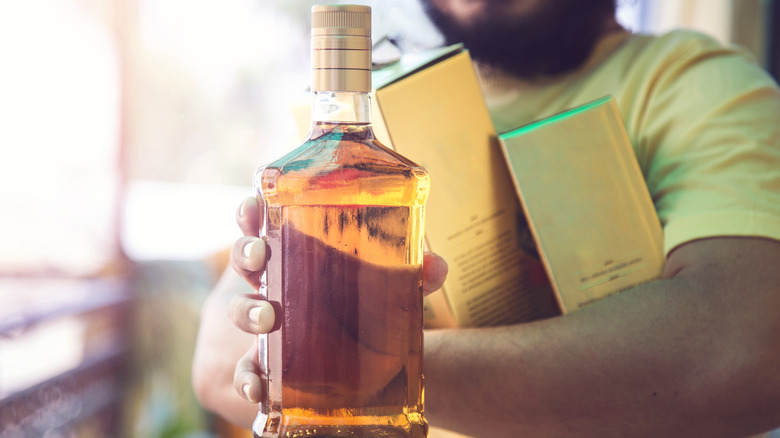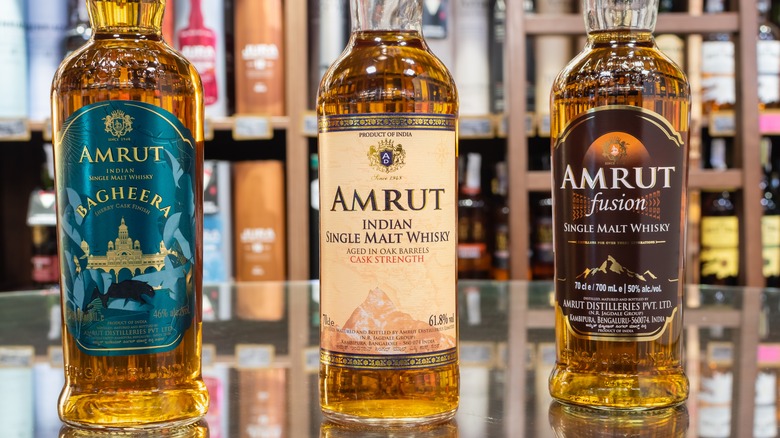The Reason India Consumes So Much Whisky
Say whisky, and Scotland, Ireland, the U.S., and maybe even Japan likely come to mind. However, the world's largest whisky consumer rests far away from those places — it's India. The South Asian country drinks almost half of the world's supply of the golden liquor, made even more impressive given that the majority of the population refrains from alcohol entirely.
And while India does import a fair number of renowned global whiskies, they also have their own rendition of the spirit, simply called Indian whisky. This style incorporates molasses into the distillation base, often mixed with classic versions of the grain-based booze. In addition to cutting down costs, this sweeter whisky flavor palate helps explain the spirit's popularity.
In India, sweet and bitter are beloved flavors, especially after a richly fragrant, spiced meal. Indian whisky diluted with water, soda water, tonic, or ice, is the most popular way to drink the spirit on the subcontinent. It's refreshing yet complex and sweet. Plus, such whiskies can be easily combined with mixers such as cola, and sweet whisky cocktails are showing a rise in popularity, particularly among younger drinkers. In addition to the flavor, there's a historical angle to the spirit's popularity, too — here's why whisky took off.
British colonialism introduced whisky to India
Whisky is not historically a traditional Indian liquor; it was first introduced by enterprising British salesmen only at the beginning of the 20th century. Many other distillations and ferments were already consumed in the subcontinent, like infused liqueurs in Rajasthan and cashew or coconut-based feni in Goa. At first, Scotch was slow to take off, coming with health concerns and a lack of availability.
However, as the 20th century trickled along, it caught on after being increasingly shared between British officers and Indian elites as a digestif or aperitif. With the rise of Bollywood, the rituals of whisky drinking appeared on the big screen, and having a regular tipple of Scotch quickly became a status symbol. Towards the end of the 20th century, demand grew enough for homegrown whisky distilleries to take off, with Amrut distilling the first Indian whisky in 1982. This domestic production continued to make the spirit more affordable and accessible. Today, consumption is widespread, and the bond between Indians and particularly their own sweeter whisky shows no signs of diminishing.

